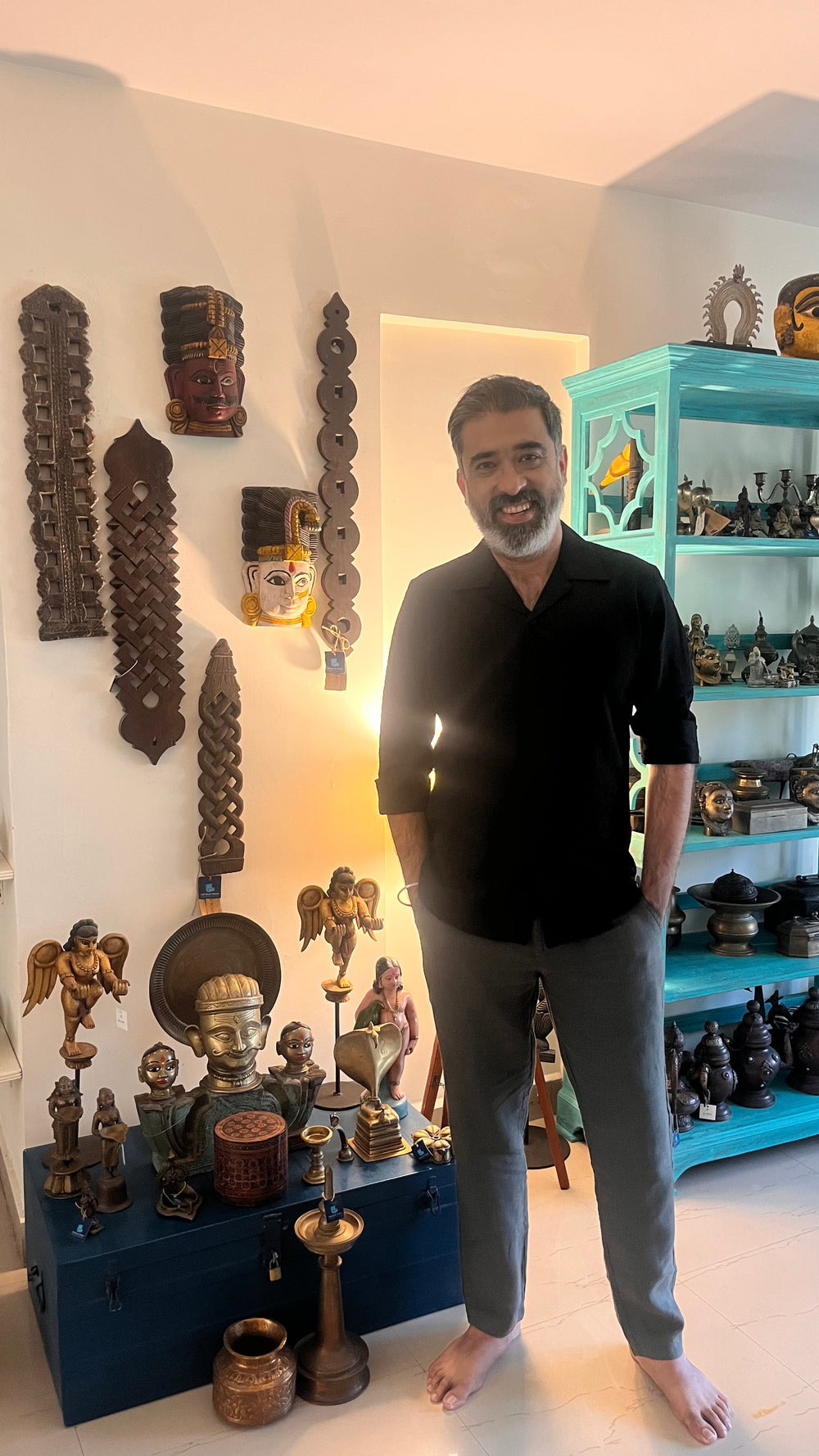
Welcome to a world where the past meets the present, and the exceptional becomes the everyday
Welcome to the mystical world of The Blue Trunk! I’m Ujval Anand, the founder, and I’m so happy to have you here.
The Blue Trunk isn’t just about artifacts—it’s about stories, memories, and the magic of India’s rich heritage. My journey started in the corporate world, but my heart was always drawn to travel, culture, and art. Collecting these pieces filled me with a joy I can’t quite put into words, and that joy led me here.
At the heart of our Bombay gallery sits an old blue trunk, a cherished symbol of everything we stand for. And now, I’m beyond excited to bring that same charm to you, wherever you are in India. With our website, you can explore and experience our collection from anywhere, anytime.
So, take a look around, find something that speaks to you, and let’s keep the magic alive together!
Love,
Ujval Anand
Founder and Curator












